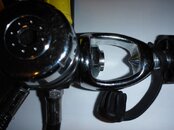I concur with what Diving Dubaï has said. I have a titan from Aqualung with an ACD . My system has a DIN connection. If one tries to dismount the forst stage by pulling on the first stage as opposed to the plastic ring thats screws on the bottle , the ACD becomes loose AND a huge leak happens when you have a new tank. It happens to me and has NOTHING to do with the maintenace/revision team. It is due to LOB help that are not careful when they unscrew the forst stage for a tank refill.
I suspect that the same thing can happen on the Yoke version but that the leak does not happen. Creating a risl at depth.
Would this be the answer?
I suspect that the same thing can happen on the Yoke version but that the leak does not happen. Creating a risl at depth.
Would this be the answer?





